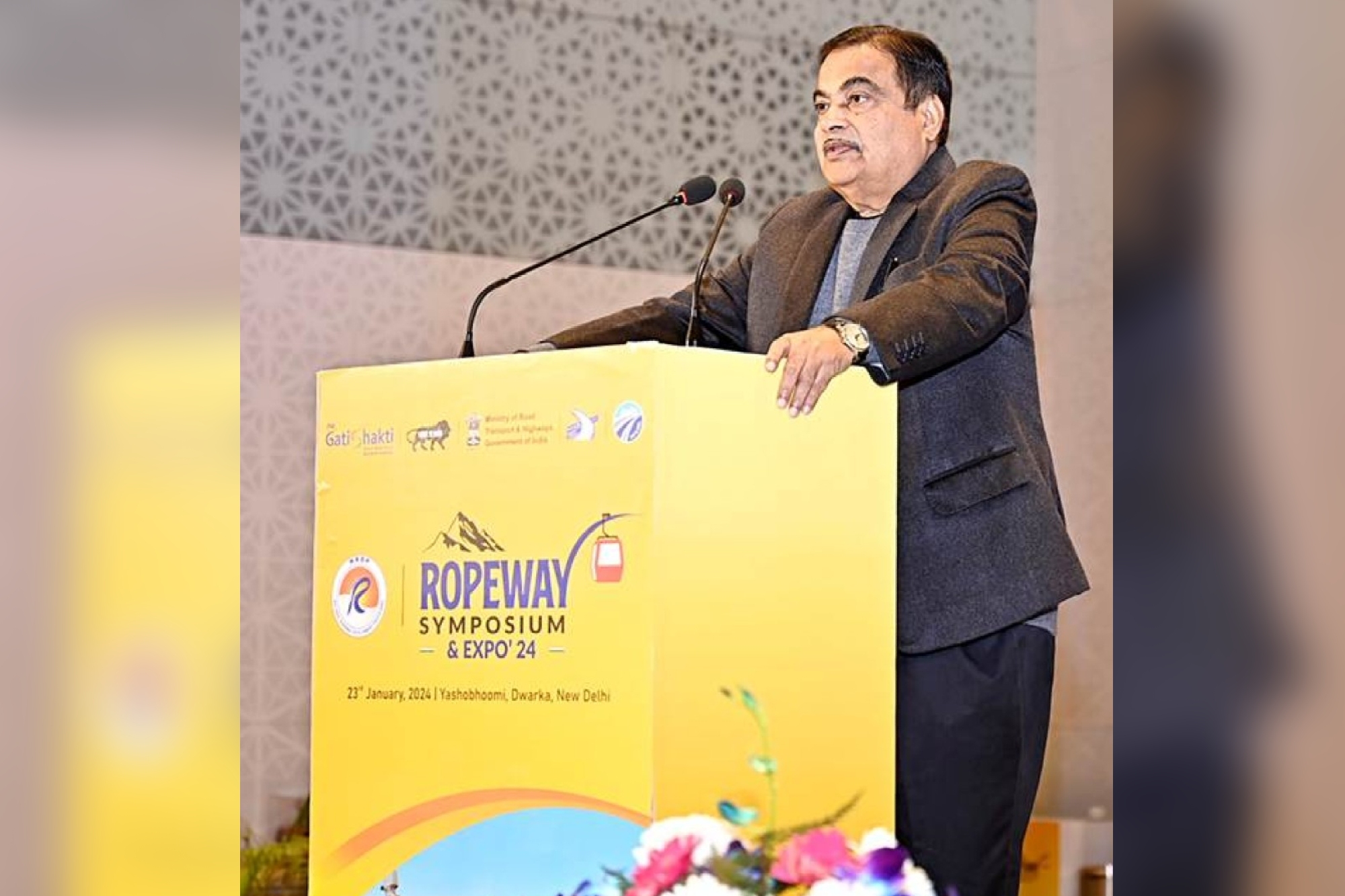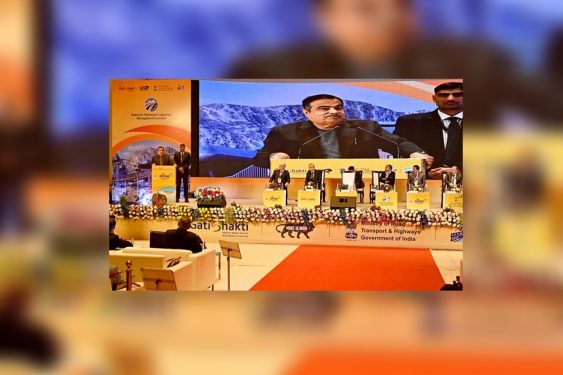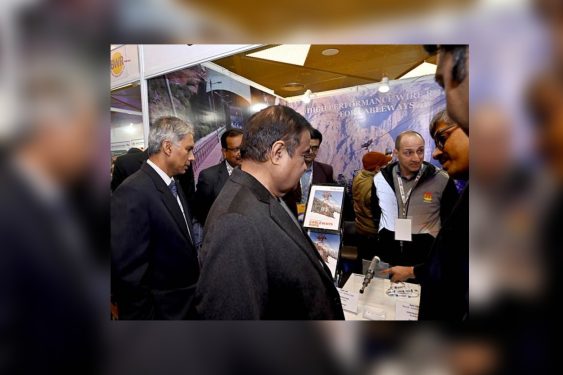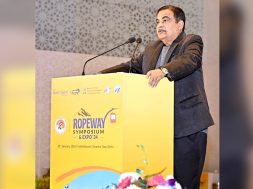Nitin Gadkari unveils ₹1.25 trillion Ropeways Development Plan

Shri Gadkari urges lowering overall project costs and promoting public-private partnerships to make ropeways commercially feasible.
According to Union Minister for Road Transport and Highways, Shri Nitin Gadkari, more than 200 projects valued at ₹ 1.25 lakh crore have been identified for the next five years under the National Ropeways Development Programme, or “Parvatmala Pariyojana.”
Speaking at the “Ropeway: Symposium-Cum-Exhibition” in New Delhi, he stated that lowering the overall project cost and promoting public-private partnerships to expand the nation’s ropeway network should be our top priorities to make ropeways economically viable. In addition to promoting tourism in the hilly regions, he claimed that the ropeway has enormous potential for metropolitan public transportation. According to him, the emphasis should be on creating locally produced, affordable solutions without sacrificing security. According to the Union Minister, ropeways have a great deal of potential to boost both employment and tourism in the nation.

India is on track to reach the goal of our Honourable Prime Minister, Shri Narendra Modi Ji, and grow its economy to $5 trillion, according to Shri Gadkari. In his words, we want to go to the third rank, and right now, our economy is in fifth place. Time-bound, cost-effective, qualitative, and sustainable infrastructure development is the main goal, according to the Union Minister. He claimed that the construction of “world-class” infrastructure guarantees “Ease of Living” for locals as well as socioeconomic growth.
Standardising current laws and regulations, according to Shri Gadkari, is the top priority. He also stated that the “Make in India” campaign should be used to promote the production of ropeway components to revolutionise the ropeway sector.
To draw more private investors to the Parvatmala Pariyojana ropeway development, the Union Minister stated that 60 percent of construction assistance is given under Hybrid Annuity Mode (HAM for ropeways), as opposed to 40 percent assistance under National Highways.
In his address to the investors at the symposium, Shri Anurag Jain, Secretary, MoRTH, says, “Development of infrastructure directly correlates to improved quality of life for the citizens. The Government of India has taken various initiatives that have not only streamlined working within the government departments but have also enhanced the ‘Ease of doing Business’ in the country. This is the right time to invest in India, as for the foreseeable future, India will remain one of the fastest-growing major economies in the world.”

NHAI Chairman Shri Santosh Kumar Yadav discussed the progress of several flagship projects under the Bharatmala Pariyojana and emphasised the multiplier effect it will have on the Indian economy while addressing the audience on “Infrastructure Growth in India.”
Facilitating industry cooperation between Indian and international manufacturers, technology suppliers, concessionaires, and infrastructure developers was the aim of the “Symposium-cum-Exhibition.” A shared forum for industry discussion to advance “Make in India” and create a plan for localising ropeway components was also made available by the event. Several panel talks with professionals from the ropeway business were also arranged to address how to improve public-private partnerships in India, construct safer and more economical ropeway systems, and improve the ropeway industry landscape.

The awarding of two ropeway projects—the Dhosi Hill Ropeway Project in the State of Haryana and the Bijli Mahadev Ropeway Project in the State of Himachal Pradesh—were the day’s highlights. On this day, NHLML and IIT Roorkee signed a memorandum of understanding to establish a centre of excellence for ropeways and other cutting-edge alternative modes of transportation. There was also a workshop on promoting wayside amenities to increase public convenience. Modern ropeway technologies from Indian and international ropeway equipment manufacturers were also showcased at the exhibition as part of the aerial mobility ecosystem.
Key insights were gained from the all-day “Symposium-cum-Exhibition,” which also assisted in identifying areas for policy development that will significantly boost domestic production and improve the potential and capabilities of ropeway technology. The National Ropeways Development Program’s ability to create safer, more affordable, and environmentally friendly forms of transportation is another way that ropeways will be crucial to the expansion of the Indian economy, as the symposium highlighted.
Cookie Consent
We use cookies to personalize your experience. By continuing to visit this website you agree to our Terms & Conditions, Privacy Policy and Cookie Policy.






